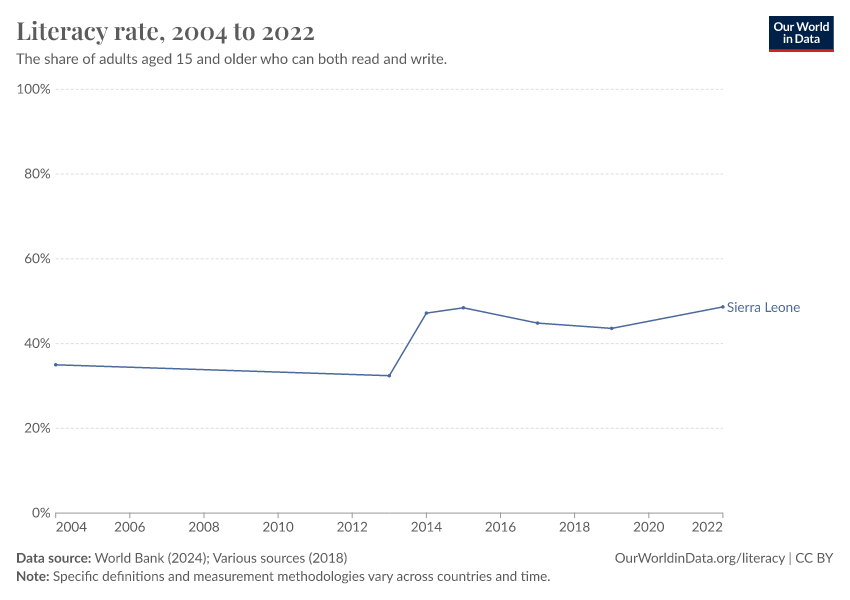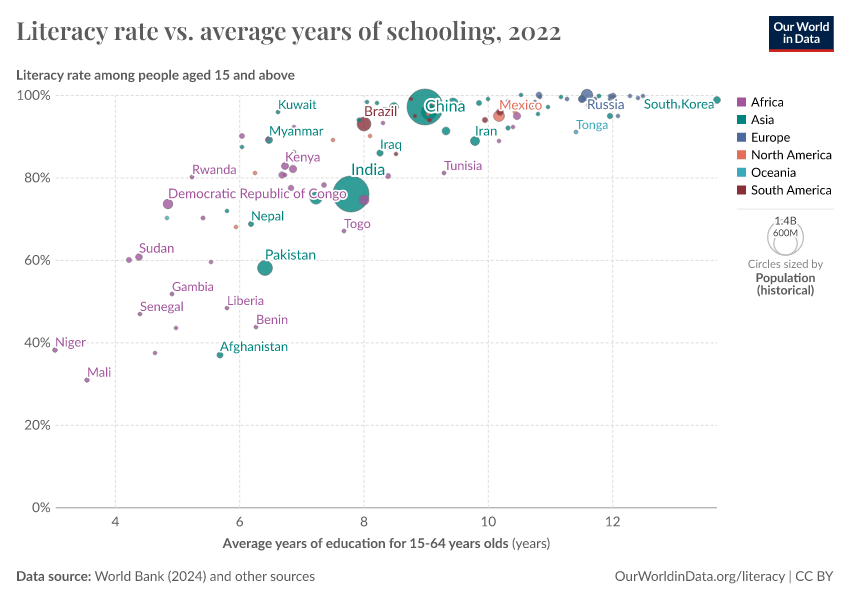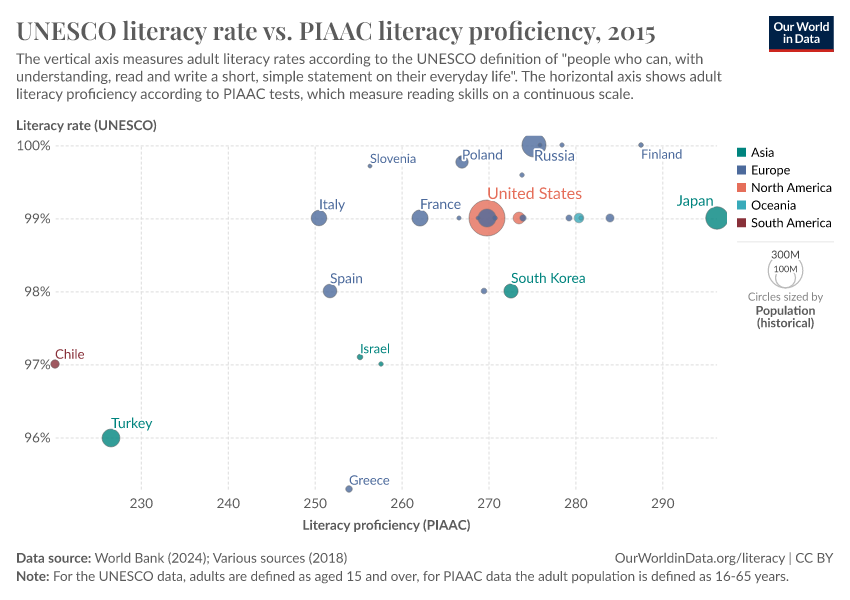Literacy rate

About this data
Related research and writing
Sources and processing
This data is based on the following sources
How we process data at Our World in Data
All data and visualizations on Our World in Data rely on data sourced from one or several original data providers. Preparing this original data involves several processing steps. Depending on the data, this can include standardizing country names and world region definitions, converting units, calculating derived indicators such as per capita measures, as well as adding or adapting metadata such as the name or the description given to an indicator.
At the link below you can find a detailed description of the structure of our data pipeline, including links to all the code used to prepare data across Our World in Data.
Notes on our processing step for this indicator
Recent estimates:
Percentage of the population between age 25 and age 64 who can, with understanding, read and write a short, simple statement on their everyday life. Generally, ‘literacy’ also encompasses ‘numeracy’, the ability to make simple arithmetic calculations. This indicator is calculated by dividing the number of literates aged 25-64 years by the corresponding age group population and multiplying the result by 100.
World Bank variable id: UIS.LR.AG25T64
Original source: UNESCO Institute for Statistics
Historical literacy data:
The historical estimates in this long-run cross-country dataset were derived from a blend of diverse sources, each contributing to different time periods. For data before 1800, the dataset relies on the work of Buringh and Van Zanden (2009), which offers insights into literacy through the lens of manuscript and book production in Europe from the sixth to the eighteenth centuries. For the years 1820 and 1870 (excluding the United States), it incorporates data from Broadberry and O'Rourke's "The Cambridge Economic History of Modern Europe." The United States data comes from the National Center for Education Statistics. Additionally, global estimates for the period 1820-2000 are drawn from van Zanden and colleagues’ "How Was Life?: Global Well-being since 1820," an OECD publication. For historical estimates specific to Latin America, the dataset uses the Oxford Latin American Economic History Database (OxLAD). Each source follows a consistent conceptual definition of literacy, although discrepancies among sources are acknowledged, necessitating cautious interpretation of year-to-year changes. The dataset also includes instances where specific sources were preferred, such as opting for OxLAD data over the World Bank for Paraguay in 1982 due to significant differences in literacy rate estimates.
Reuse this work
- All data produced by third-party providers and made available by Our World in Data are subject to the license terms from the original providers. Our work would not be possible without the data providers we rely on, so we ask you to always cite them appropriately (see below). This is crucial to allow data providers to continue doing their work, enhancing, maintaining and updating valuable data.
- All data, visualizations, and code produced by Our World in Data are completely open access under the Creative Commons BY license. You have the permission to use, distribute, and reproduce these in any medium, provided the source and authors are credited.
Citations
How to cite this page
To cite this page overall, including any descriptions, FAQs or explanations of the data authored by Our World in Data, please use the following citation:
“Data Page: Literacy rate”, part of the following publication: Hannah Ritchie, Veronika Samborska, Natasha Ahuja, Esteban Ortiz-Ospina and Max Roser (2023) - “Global Education”. Data adapted from World Bank, Various sources. Retrieved from https://ourworldindata.org/grapher/cross-country-literacy-rates [online resource]How to cite this data
In-line citationIf you have limited space (e.g. in data visualizations), you can use this abbreviated in-line citation:
World Bank (2024); Various sources (2018) – processed by Our World in DataFull citation
World Bank (2024); Various sources (2018) – processed by Our World in Data. “Literacy rate” [dataset]. World Bank, “World Bank Education Statistics (EdStats)”; Various sources, “Cross-country literacy rates” [original data]. Retrieved January 27, 2025 from https://ourworldindata.org/grapher/cross-country-literacy-rates


